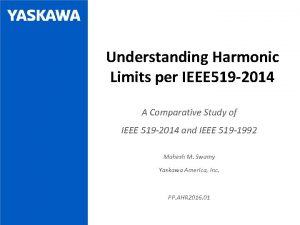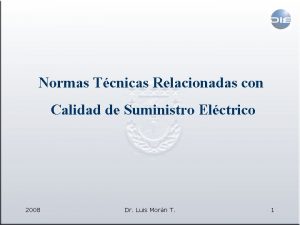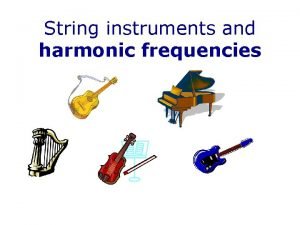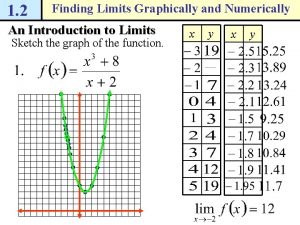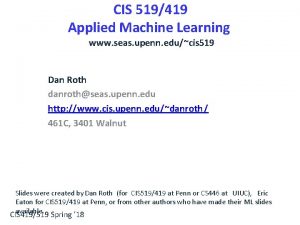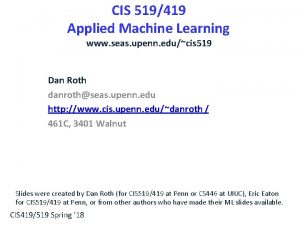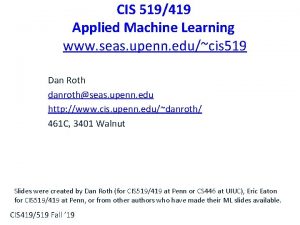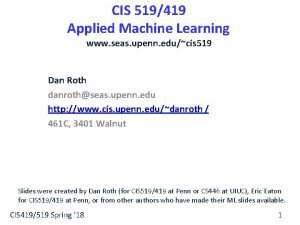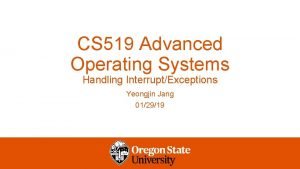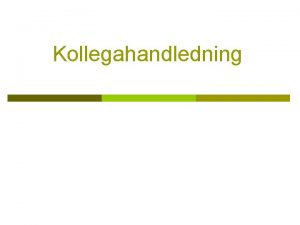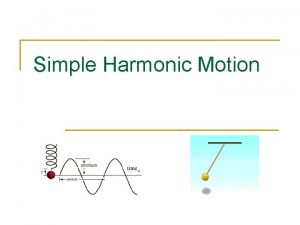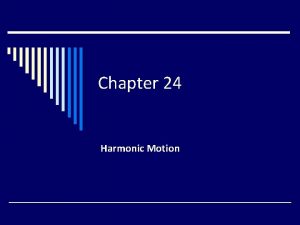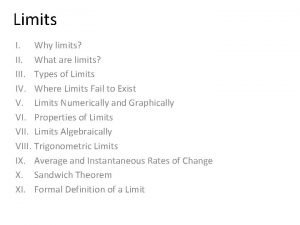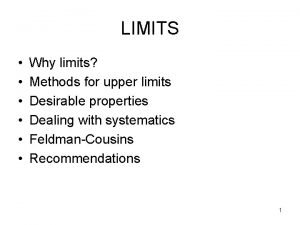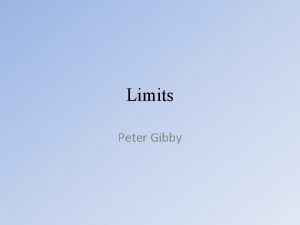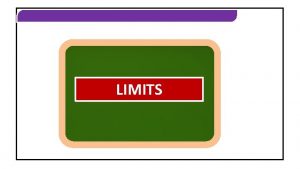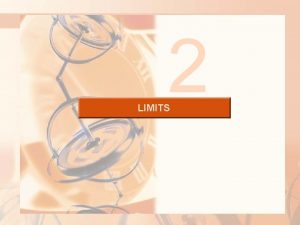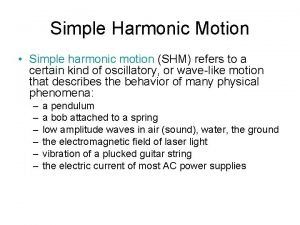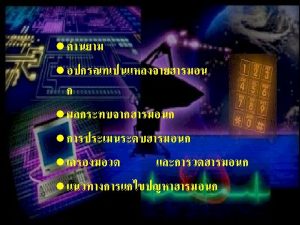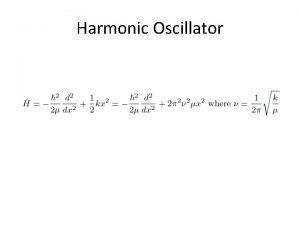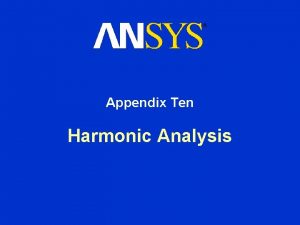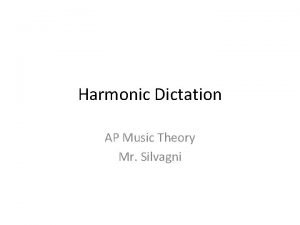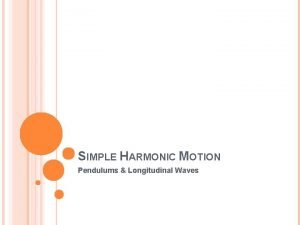Understanding Harmonic Limits per IEEE 519 2014 A





















- Slides: 21

Understanding Harmonic Limits per IEEE 519 -2014 A Comparative Study of IEEE 519 -2014 and IEEE 519 -1992 Mahesh M. Swamy Yaskawa America, Inc. PP. AHR 2016. 01

Organization • Introduction • Fundamental shift in focus and Why? • Comparison of Harmonic guideline between IEEE 519 -2014 and IEEE 519 -1992 • Introduction of Statistical Methods • Significance of new standard on capacitor based filters

Introduction • Voltage harmonics and system efficiency have been stressed heavily in new document • Current harmonics causes voltage harmonics – hence current harmonic control has been given due importance • System efficiency improvement has been stressed throughout the document

Fundamental Shift in Focus • Voltage and Current Harmonics have been explicitly mentioned to be System Specification and NOT Device Specification • Statistical Measurement has been Introduced and stressed • Utility is NOW involved in Harmonic Measurement – not the end user

Fundamental Shift in Focus • Power Conversion Group has been completely removed! • Standard is driven by Transmission / Distribution, i. e. Producers * Front page of respective documents

Old revised to New • The new document overrides the old guideline since it is noted to be a revision Front page of respective documents

Interesting Comparison Fact • IEEE 519 -1992 is a 101 page document and is a “teaching or tutorial” document • In IEEE 519 -2014 is only a 29 page document and there is NO attempt to educate the reader on reactive power control or harmonic current control

Point of Common Coupling • In IEEE 519 -1992, point of common coupling (PCC) is vaguely defined and is open to multiple interpretations • In IEEE 519 -2014, PCC is very well defined. PCC is not at the equipment but is a “Point on a Public Power Supply System”.

PCC Differences between 519 -1992 and 519 -2014 • In IEEE 519 -1992, point of common coupling (PCC) is also defined as follows: “Within an industrial plant, the PCC is the point between the nonlinear load and other loads. ”

PCC Differences between 519 -1992 and 519 -2014 • In IEEE 519 -2014, PCC is: “Frequently for service to industrial users (i. e. , manufacturing plants) via a dedicated service transformer, the PCC is at the HV side of the transformer. For commercial users (office parks, shopping malls, etc. ) supplied through a common service transformer, the PCC is commonly on the LV side of the service transformer. ”

Key Departure from the PAST • “The recommended limits in this clause apply only at the point of common coupling and should not be applied to either individual pieces of equipment or at locations within a user’s facility. ” • “In most cases, harmonic voltages and currents at these locations could be found to be significantly greater than the limits recommended at the PCC due to lack of diversity, cancellation, and other phenomenon that tend to reduce the combined effects of multiple harmonic sources to levels below their algebraic summation. ” This is a Major change, if not the elimination of, the OLD and controversial way of dealing with harmonics.

Total Demand Distortion - Differences between 519 -1992 and 519 -2014 • In 519 -1992, the definition of was based on the maximum load current - measurement period was 15 minutes or 30 minutes • In Section 5. 2, of IEEE 519 -2014, in the definition for TDD, the maximum demand current is used and is defined as: – “This current value is established at the point of common coupling and should be taken as the sum of the currents corresponding to the maximum demand during each of the twelve previous months divided by 12” Major shift in focus – It has shifted from short term to LONG term, stressing energy efficiency aspect of Harmonic Control

System Impedance Manipulation Addressed in 519 -2014 • In IEEE 519 -2014, system impedance manipulation by end user has been strictly curtailed. It says, “…users should not add passive equipment that affects the impedance characteristic in a way such that voltage distortions are increased. ” Explanation: Capacitors offer low impedance to harmonic currents. Flow of harmonic current into capacitors through system impedance increases system voltage distortion. Use of capacitors in filters (both active and passive) has now been restricted and the end user will be responsible if capacitor increases voltage distortion.

Statistical Evaluation • Harmonic measurement will get more statistical – each frequency component packet (3 -sec packet) need to be tracked for 1 day, 7 days, and 12 months! • 1 day = Very Short Term; and • 7 days= Short Term

Harmonic Voltage Limits – IEEE 519 -2014 • 99 th percentile value (value that is exceeded for 1% of the measurement period) should be calculated for each 24 -hr period for comparison with the recommended limits in Cl. 5. • 95 th percentile value (values that is exceeded for 5% of the measurement period) should be calculated for each 7 -day period for comparison with the recommended limits in Cl. 5.

Current Distortion Limits – IEEE 519 -2014 • • 99 th percentile value (value that is exceeded for 1% of the measurement period) should be calculated for each 24 -hr period for comparison with the recommended limits in Cl. 5. 95 th percentile value (values that is exceeded for 5% of the measurement period) should be calculated for each 7 -day period for comparison with the recommended limits in Cl. 5.

Current Distortion Limits – IEEE 519 -2014

Conclusions • IEEE 519 -2014 is a very relaxed guideline • Clearly identifies PCC and mentions it very clearly that measurement should NOT be at the device input • Stresses Long Term Averaging and strongly recommends use of Maximum Demand Current based on 12 month study • Also, for Industrial Customers, measurement is to be done on HV side of service transformer and many end users are NOT qualified to make such measurements

Conclusions • Comes down hard on topologies that change the “System Impedance Characteristics” – clearly topologies that have large input capacitors should be carefully evaluated. • Adding an input AC reactor or a DC link choke is perhaps the most promising and sufficient solution depending on the system. • Distributing the load into phase shifted buses at the service entrance would seem to be the most cost effective way of dealing with Harmonics in Commercial and Industrial plants.

Final Thoughts • “As power quality considerations evolve Yaskawa has a continued opportunity and responsibility to recommend equipment and countermeasures which both allow the customer to enjoy best value (cost) and highest system efficiency. • With the changes discussed, VFDs can be justified in more and more applications.

Visit us in Booth #1814 for an ice cream treat from 1: 00 pm till 3: 00 pm Tuesday, Jan. 26 th @2015 YASKAWA America, Inc. 21
 Ieee 519
Ieee 519 Ieee-519
Ieee-519 Tension wave
Tension wave Horizontal
Horizontal Real limits vs. apparent limits
Real limits vs. apparent limits Lesson 2 understanding limits graphically and numerically
Lesson 2 understanding limits graphically and numerically 12-1 estimating limits graphically
12-1 estimating limits graphically Understanding limits graphically and numerically
Understanding limits graphically and numerically Upenn cis 519
Upenn cis 519 Gdp 519
Gdp 519 Cis 419 upenn
Cis 419 upenn Cis 419
Cis 419 L1111l
L1111l Cs 519
Cs 519 Cis 519
Cis 519 Cs 519
Cs 519 60 seconds on the clock
60 seconds on the clock Longum iter est per praecepta breve per exempla
Longum iter est per praecepta breve per exempla Il mio diletto
Il mio diletto 24 km berapa dam
24 km berapa dam Per capita vs per stirpes
Per capita vs per stirpes Didelis kamuolys pilnas auksinių adatų prikištas
Didelis kamuolys pilnas auksinių adatų prikištas
